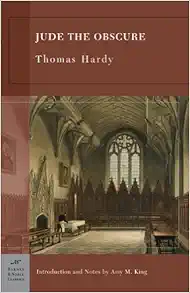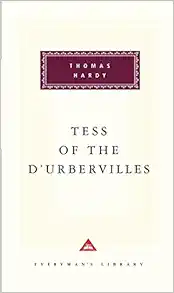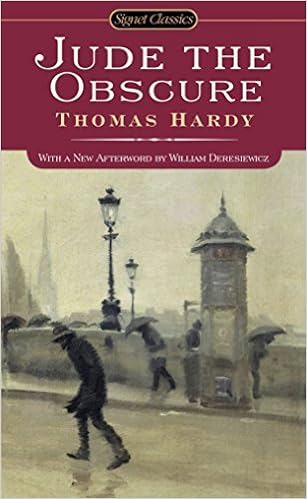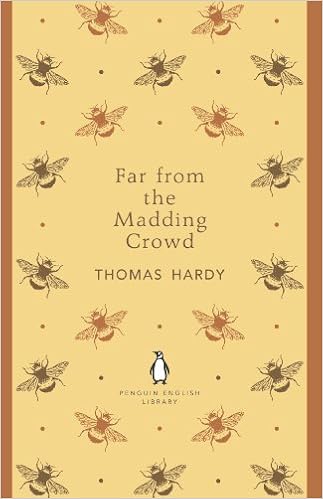
Jude the Obscure (Barnes & Noble Classics Series)
Description
About the Author Amy M. King is an Assistant Professor of Literature at the California Institute of Technology, and the author of Bloom: The Botanical Vernacular in the English Novel , forthcoming from Oxford University Press. She is also the author of articles on eighteenth- and nineteenth-century British literature and culture, and has taught widely in the English novel at Haverford College and Caltech. King received her doctorate in 1998 from Harvard University in English and American Literature and Language. Excerpt. © Reprinted by permission. All rights reserved. From Amy M. King’s Introduction to Jude the Obscure Hardy’s stature as a novelist when Jude the Obscure was published guaranteed him a certain degree of critical attention, but the attention he was to receive was so negative as to alter the course of his career. Jude the Obscure was Hardy’s final novel. In one of the strangest turns in literary history, Hardy at the age of fifty-five turned to poetry, which he continued to write until his death in 1928 at the age of eighty-eight. In letters to close friends he pretends a somewhat jaunty indifference to the negative response to Jude , but in an essay entitled “The Profitable Reading of Fiction,” which appeared in the journal Forum in 1888, Hardy’s defensiveness about readers suggests the effect the reception of his novel would have upon him: A novel which does moral injury to a dozen imbeciles, and has bracing results upon a thousand intellects of normal vigor, can justify its existence. . . . It is unfortunately quite possible to read the most elevating works of imagination in our own or any language, and, by fixing the regard on the wrong sides of the subject, to gather not a grain of wisdom from them, nay, sometimes positive harm. What author has not had his experience of such readers?—the mentally and morally warped ones of both sexes, who will, where practicable, so twist plain and obvious meanings as to see in an honest picture of human nature an attack on religion, morals, or institutions. If Hardy had become wary of a certain kind of reader, his bitterness toward what he calls “the mentally and morally warped ones” did not prevent him from continuing to believe that such “imbeciles” numbered in the dozens, not the thousands. He continued to tinker with the novel in subsequent editions. In the 1903 edition he tempered the scene in which Arabella throws the pig genitals at Jude, while in the 1912 edition he introduces some two hundred small but nevertheless effectively important changes. These changes, which the edition you read here reflects, are generally considered to have been softening gestures to the depiction of Sue. For instance, as the bibliographical critic Robert Slack has shown, in the 1903 edition Jude threatens to return to Arabella unless Sue consents to live with him (and, it is inferred, become his sexual partner), and Sue agrees to it because he has “conquered” her; in the 1912 edition, Sue’s acquiescence is the result of love. The key words “I do love you” are included seventeen years after the first publication of the novel. The revisions that Hardy makes go beyond an author’s usual attention to errors in early editions. Jude clearly stayed with Hardy in the years following his switch to poetry, though whether we should understand that switch in light of a renunciation inspired by the extremity of the negative reaction to Jude or as an excuse for returning to the genre (poetry) with which he began his writing career is less certain; it was, if nothing else, a decisive one.
Features & Highlights
- &&LDIV&&R&&LDIV&&R&&LDIV&&R&&LI&&RJude the Obscure&&L/I&&R, by &&LB&&RThomas Hardy&&L/B&&R, is part of the &&LI&&RBarnes & Noble Classics&&L/I&&R&&LI&&R &&L/I&&Rseries, which offers quality editions at affordable prices to the student and the general reader, including new scholarship, thoughtful design, and pages of carefully crafted extras. Here are some of the remarkable features of &&LI&&RBarnes & Noble Classics&&L/I&&R: &&LDIV&&R
- New introductions commissioned from today's top writers and scholars
- New introductions commissioned from today's top writers and scholars
- Biographies of the authors
- Biographies of the authors
- Chronologies of contemporary historical, biographical, and cultural events
- Chronologies of contemporary historical, biographical, and cultural events
- Footnotes and endnotes
- Footnotes and endnotes
- Selective discussions of imitations, parodies, poems, books, plays, paintings, operas, statuary, and films inspired by the work
- Selective discussions of imitations, parodies, poems, books, plays, paintings, operas, statuary, and films inspired by the work
- Comments by other famous authors
- Comments by other famous authors
- Study questions to challenge the reader's viewpoints and expectations
- Study questions to challenge the reader's viewpoints and expectations
- Bibliographies for further reading
- Bibliographies for further reading
- Indices & Glossaries, when appropriate
- Indices & Glossaries, when appropriate
- All editions are beautifully designed and are printed to superior specifications; some include illustrations of historical interest. &&LI&&RBarnes & Noble Classics &&L/I&&Rpulls together a constellation of influences―biographical, historical, and literary―to enrich each reader's understanding of these enduring works.&&L/DIV&&R&&L/DIV&&R&&LP style="MARGIN: 0in 0in 0pt"&&R &&L/P&&R&&LP style="MARGIN: 0in 0in 0pt"&&RVirginia Woolf called him “the greatest tragic writer among English novelists,” but &&LSTRONG&&RThomas Hardy&&L/B&&R was so distressed by the shocked outrage that greeted &&LI&&RJude the Obscure&&L/I&&R in 1895 that he decided to quit writing novels. For in telling the story of Jude Fawley, whose many attempts to rise above his class are crushed by society or the forces of nature, Hardy had attacked Victorian society’s most cherished institutions―marriage, social class, religion, and higher education. &&L/P&&R&&LP style="MARGIN: 0in 0in 0pt"&&R &&L/P&&R&&LP style="MARGIN: 0in 0in 0pt"&&RA poor villager, Jude Fawley longs to study at the elite University of Christminster, but his ambitions are thwarted by class prejudice―and an earthy country girl who tricks him into marriage by pretending to be pregnant. Entrapped in a loveless marriage, he becomes a stonemason and falls in love with his cousin―the intellectual, free-spirited Sue Bridehead, who is also unhappy in marriage. Sue leaves her husband to live with Jude and eventually bears his children out of wedlock. Their poverty and the weight of society’s disapproval begin to take their toll on the couple, forcing them into a shattering downward spiral that ends in one of the most shocking scenes in all of literature.&&L/P&&R&&LP style="MARGIN: 0in 0in 0pt"&&R &&L/P&&R&&LP style="MARGIN: 0in 0in 0pt"&&RA stunning masterpiece, &&LI&&RJude the Obscure&&L/I&&R is Hardy’s bleakest and most personal novel.&&L/P&&R&&LP&&R&&LB&&RAmy M. King&&L/B&&R is an Assistant Professor of Literature at the California Institute of Technology, and the author of &&LI&&RBloom: The Botanical Vernacular in the English Novel&&L/I&&R, forthcoming from Oxford University Press. She is also the author of articles on eighteenth- and nineteenth-century British literature and culture, and has taught widely in the English novel at Haverford College and Caltech. King received her doctorate in 1998 from Harvard University in English and American Literature and Language. &&L/P&&R&&L/DIV&&R&&L/DIV&&R





